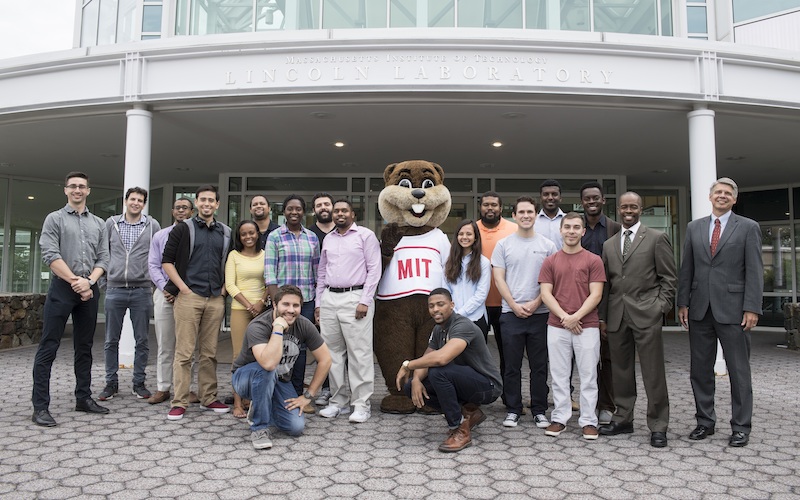This was not your typical conference career fair. Most fairs don’t have sponsors and representatives from leading universities, corporations, and national laboratories such as Georgia Tech, Lawrence Livermore, IBM, Cal Poly Tech, Boeing, MIT Lincoln Laboratory, Intel, Cal Berkeley, Aerospace, Adobe Systems Incorporated, Space X, USC, and others; all of whom were laser-focused while listening to the students at the National GEM Consortium’s annual conference. Why? The caliber of the prospective employees and interns.
Students included the likes of:
- National laboratory scholarship winners
- USC’s Viterbi Award winner (she received the honor for making lasting contributions to neuromorphic engineering)
- A bioengineering Ph.D. student improving the detection of brain diseases using MRIs instead of surgery
- An undergrad creating ways to communicate during natural disasters when cell service is limited and power is out
- A Master’s candidate designing a non-linear dynamical system replicating spring buckling behavior
- A software engineer master’s student, with a 3.96 GPA, implementing example-based photometric stereo for desktop 3D scanning; and developing a desktop application for hardware interfacing using Qt in C++
As I walked through the career fair and spoke with some of the reps, I learned that GEM Fellows typically have GPAs exceeding 3.5, across a wide variety of technical majors. More than 1,300 students apply each year for the highly competitive fellowship, but only 100 or so receive the full fellowship award, in larger part due to funding shortfall. The representatives told me the conference is mandatory because more than 80 percent of GEM Fellows accept full-time job offers from the companies and labs in GEM’s Consortium. Fellows typically intern with their sponsoring companies.
I spotted GEM’s CEO, Brennon Marcano, and asked him to explain why I had never heard of GEM – and exactly what is this secret-weapon of a nonprofit, which companies like Northrup Grumman are using to win the talent war.
“Simply put,” he said, “GEM is a network of leading corporations, government labs, universities, and research institutions that provides exceptional scholars from underrepresented communities with full-tuition, graduate-level STEM Fellowships. We were founded in 1976, and since then we’ve placed more than 4,000 outstanding hires in Silicon Valley, and throughout the nation.”
By way of example, Marcano shared some names of past GEM Fellows, a virtual “Who’s Who” of scientists, academicians, and executives:
- Former Xerox CEO Ursula Burns (now an Uber board director)
- Engineering school deans, including two of the four women deans, and Michigan University’s Dr. Alec Gallimore and University of Maryland’s Dr. Darryll J. Pines, both are 2018 inductees into the National Academy of Engineering, the nation’s highest engineering honor
- NYU solar energy scientist Dr. Andre Taylor, whose team recently made a breakthrough in solar cell design, as reported in Science magazine
- Chaired MIT engineering professor Christine Ortiz, an innovator in project-based STEM education
- Former Booz Allen Hamilton EVP Reginald Van Lee
I had an opportunity to speak briefly with Michael A. Greene, Chairman of the Board of the National GEM Consortium, and Intel Vice President and General Manager. “The National GEM Consortium is one of Intel’s valued partnerships,” he said. “Each year we sponsor approximately 30 Fellows. The National GEM Consortium plays an important role in helping us to find the best and brightest talent to fuel our innovation engine.”
The number of STEM Professionals necessary to fuel the U.S. engine is a chilling supply-and-demand issue, according to Rebecca Bearse, Founder and Principal of Diverse Talent Solutions. “In discussions concerning the dismal state of diversity and inclusion in Silicon Valley’s workplaces, one often forgets about the many non-profits working incredibly hard to prepare, support, and nurture the same underserved students that could someday literally change the face of tech, and thus the numbers and the story, in tech and beyond. Organizations like GEM are especially significant when we consider the budget cuts to STEM education, our nation’s poor ranking in science and math, and the massive shortage of STEM professionals now and in the coming decades.”
Rebecca explained that non- and for-profit organizations working to increase the supply are imperative because even manufacturing now demands an entirely new set of skills. According to U.S. News and World Report, the shortage in STEM professionals will affect diverse industries, with the manufacturing sector alone predicted to need about 3.5 million jobs by 2025 – but up to two million of these positions might go unfilled due to difficulty in finding qualified workers.
According to recruiting firm Brightwing, companies’ productivity, growth, and innovation are just a few segments that will suffer – and the talent shortage ensures that those vacancies will take at least three months to fill.
Dr. Eric Evans, Director of MIT Lincoln Laboratory joined our conversation with a bright note. “The National GEM Consortium is a critically important part of our diversity and inclusion programs. GEM has connected us to a much wider pool of top talent pursuing STEM-related degrees.”
Marcano added, “For the past four decades, GEM has played an integral role in addressing the talent pipeline by identifying and supporting the best and brightest diverse talent in STEM. That role has evolved to not just addressing entry-level talent, but also mid-to-senior level talent needs; thus, assisting in creating a sustainable diverse talent ecosystem.” He expounded on how Consortium members can access GEM’s alumni database of experienced candidates.
I left the event inspired by the commitment of GEM and its Consortium members to help close the shortfall. I was awed by the brilliant young minds ̶ and the amazing things they would do in the future ̶ but I also felt gravely concerned that there were not enough of these gems. It gave me pause. I almost wished it had been your typical career fair.










